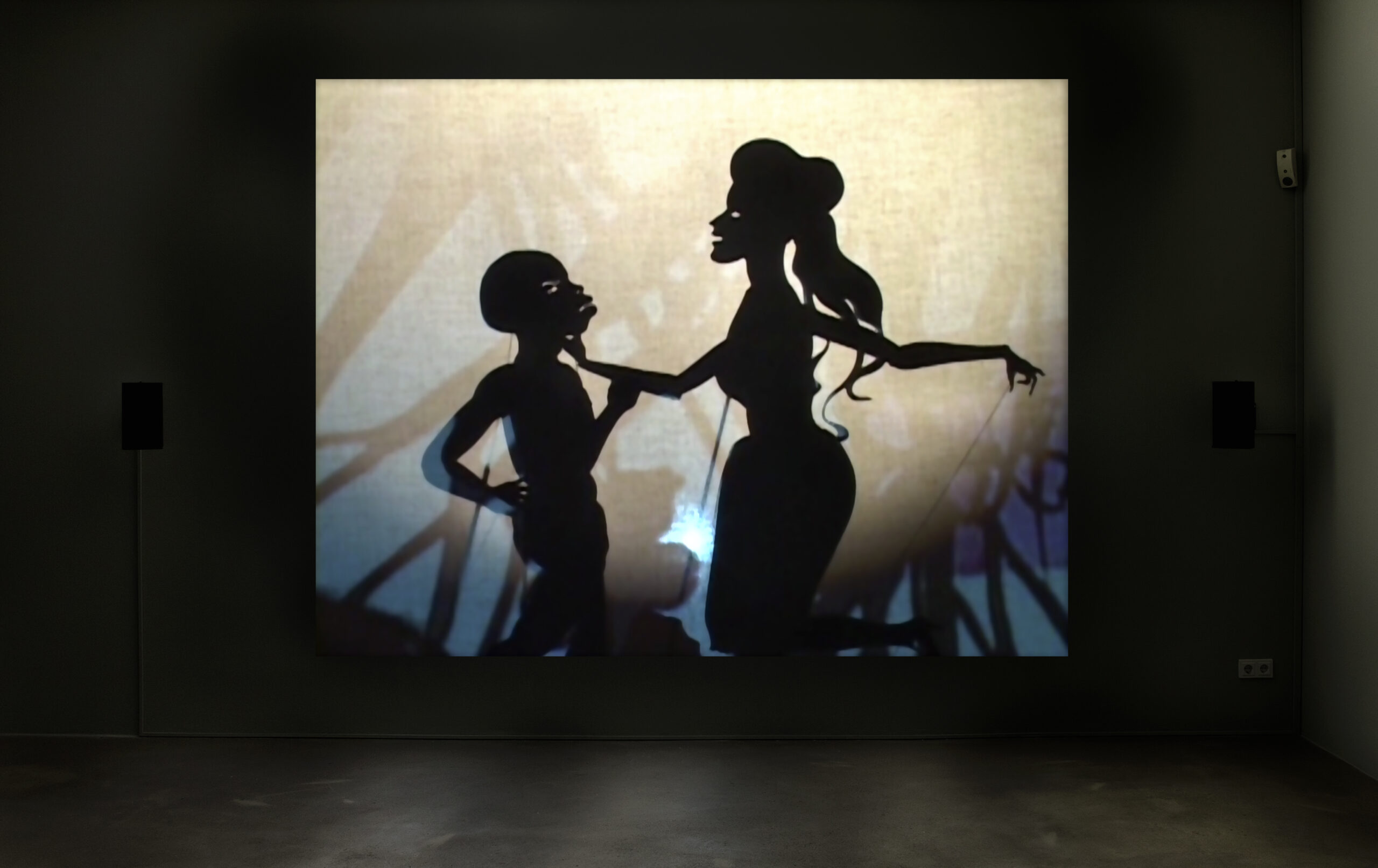
Fall Frum Grace, Miss Pipis Blue Tale
From the 1970s to the 21st century: this summer we get to revisit three women’s boundary-pushing work in film.
Once seen as just a technical means of documenting performance, film as an accepted art form has come a long way. This summer Berlin is lucky enough to have survey exhibitions of two pioneering female artists working in film in the 1970s and 80s alongside that of Kara Walker’s more recent contribution to the genre.
Well known for her paper-cut silhouettes, films and drawings, American artist Kara Walker often presents tales of bygone-era trauma that still speak to contemporary social issues. In her 17-minute video Fall Frum Grace, Miss Pipi’s Blue Tale, 2011 (at Sprüth Magers through September 8), Walker uses shadow puppets to tell the tale of a white “southern belle” in a romantic relationship with a black man, presumably a slave. One of their passionate assignations is intruded upon and results in the terrible mob beating, castration and burning of Miss Pipi’s lover. Even though acted out by puppets, the sex and violence in the film are graphic. Still, the visibility of Walker’s hands reminds viewers that she is concertedly performing the history of violence against African-Americans, drawing attention to its continuing presence in the here and now.
Much celebrated for her film works, Cuban artist Ana Mendieta has been the focus of women’s protest groups since her mysterious death in 1985. She fell from a 34th-floor window of the apartment she shared with her husband, fellow artist Carl Andre. Andre stood trial for her murder but was acquitted due to insufficient evidence. Through July 22 Gropius Bau is showing Covered in Time and History: The Films of Ana Mendieta. Filling six rooms, all but one of the 23 films on display are silent and shot in the characteristic yellow hue of 1970s and 80s film-stock. In Moffi tt Building Piece, May 1973, pedestrians walk by a pool of blood that Mendieta has placed on the pavement. They unwittingly become the artist’s players as she captures their oblivion or curiosity on film. The motifs of blood and crude human outlines speak to the artist’s interest in the separation between the female body and nature. In her last known film, the mesmerising Ochun, October 13, 1981, a figure is made in relief from mud on a beach and open to the flowing tide at either end. At eight minutes, it’s considerably longer than the other works and the only one to have sound – perhaps an apt bookend to what was a remarkable career cut short.
In a Kreuzberg warehouse, KW Institute for Contemporary Art’s off-site presentation First Person Plural includes both interactive video works and straight up projections of the work of Lynn Hershman Leeson. The simultaneously enchanting and disturbing Lorna, 1979-82, is one of the earliest examples of interactive video art. Visitors are invited to sit down in a small, kitsch set of a living room, take up the TV remote and choose videos from agoraphobic Lorna’s life to watch. In a separate room Hershman Leeson’s Electronic Diaries are projected onto large screens. In these single shots, the artist is talking directly to the camera as if she has let you come into her therapy session. As she very frankly talks about subjects ranging from the miraculous disappearance of her brain tumour to dieting, her play on the ambiguity between fact and fiction is reminiscent of other feminist performance work of the 1970s.
Covered in Time and History: The Films of Ana Mendieta Through Jul 22 Martin Gropius Bau, Kreuzberg
Kara Walker Through Sep 8 Sprüth Magers, Mitte
First Person Plural Through Jul 17 KW Institute for Contemporary Art, Kreuzberg


